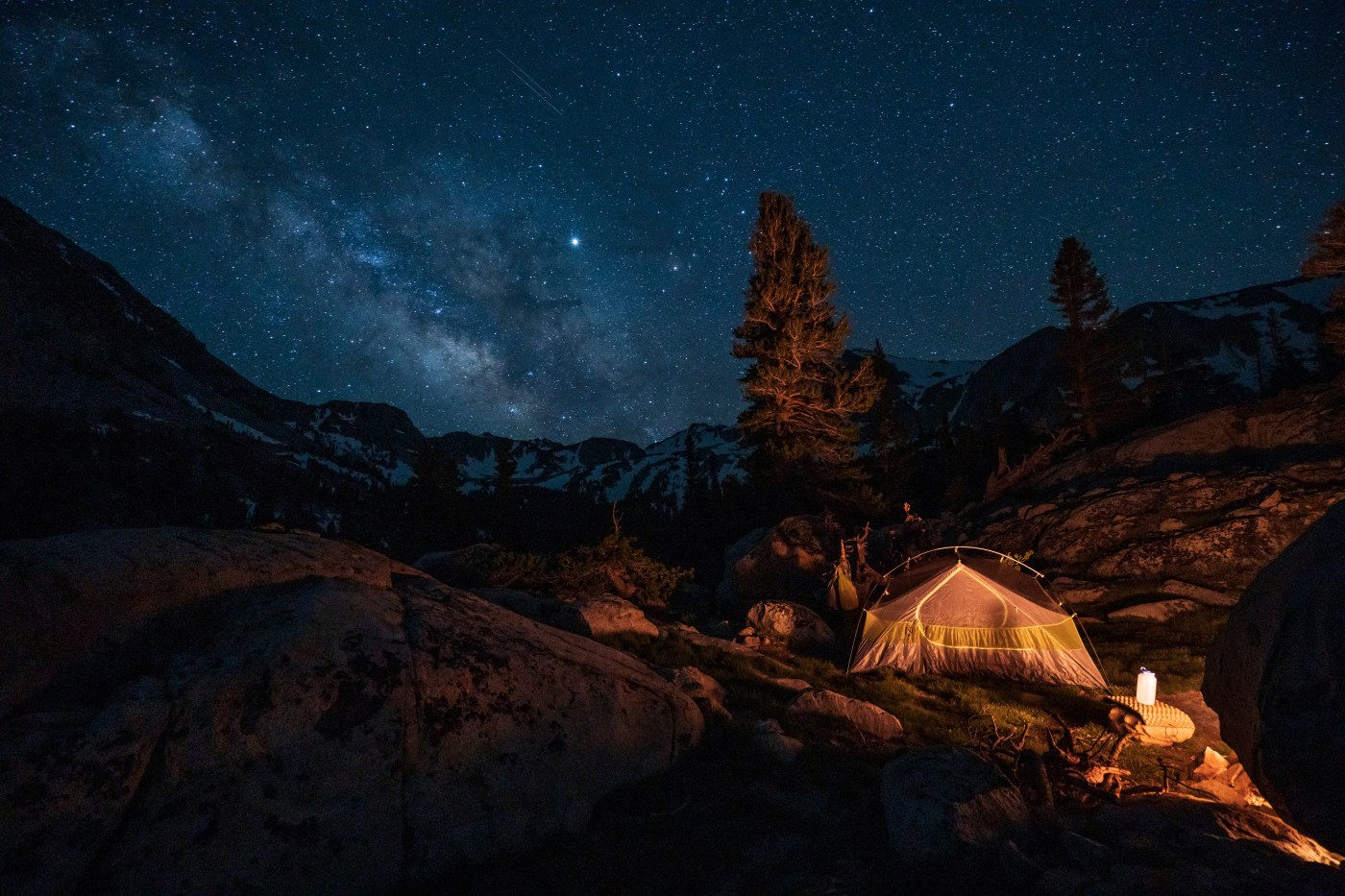
Before there was light: Humans have never been the same since we got the light bulb
Think back to the last time your home and neighborhood were plunged into darkness.
That was Breck Parkman’s experience for 10 nights when the 2017 Nuns and Tubbs fires cut power to his Sonoma County home, and he and his teenage son suddenly had to live without a bright and steady source of light.
“We just did candles, and we had an old oil lamp,” says Parkman, a retired archaeologist with the California State Parks.
The experience reminded Parkman of how local Native American tribes and other preindustrial aboriginal groups he’d studied for four decades lived half their lives in darkness.
His friend Gregg Castro, the cultural director for the Peninsula-based Association of Ramaytush Ohlone, noted that California’s original inhabitants followed nature’s “clock.” They rose before dawn, completed daily tasks by dusk and went to bed early — or gathered at night in their roundhouse, sharing ancient stories and daily gossip around a campfire, their community’s only source of light.
“For thousands of years, they did quite well,” Castro says. “They developed a lifestyle that coincided with nature for the most part.”
It’s only during a wilderness camping trip or a power outage caused by extreme weather that 21st century Bay Area residents are reminded, too, that this is how humans lived for hundreds of thousands of years — until the arrival of the lightbulb.
An Oakland police car cruises the city’s Montclair district during a PG&E power outage in October 2019. (Ray Chavez/Bay Area News Group)
It was nearly 150 years ago that Thomas Edison and others commercialized incandescent lightbulbs and made electric power possible in homes, in factories and on city streets. “Put an undeveloped human being into an environment where there is artificial light,” Edison once said, “and he will improve.”
Indeed, the widespread availability of artificial light has changed human life in profound ways. The illumination of homes, workplaces and public spaces at the flip of a switch has influenced how we sleep, work, socialize, move around our communities and interact with nature and the night sky.
“Never before, in our everyday lives, have we been more dependent upon artificial illumination, arguably the greatest symbol of modern progress,” writes Virginia Tech history professor A. Roger Ekirch, in his 2005 book “At Day’s Close: Night in Times Past.”
But there’s been a price to pay for this progress. Scientists have documented how people’s sleep, circadian rhythms and physical and mental health have been affected by hours of exposure to artificial light, according to Stanford-educated materials scientist and author Ainissa Ramirez.
One notable finding by scientists and historians is that people in preindustrial societies in Western Europe, Africa, Asia and South America didn’t sleep straight through the night. Ekirch says the “consolidated” eight-hour model of sleep is a vestige of the Industrial Revolution. Preindustrial people instead slept in shifts – retiring soon after sunset, sleeping for about four hours, waking for an hour or two in the middle of the night to ruminate, work or chat with family and neighbors, before going back to sleep until sunrise.
Meanwhile, all the bright, 24/7 lighting that surrounds our communities, along with the thousands of privately owned satellites being launched into space since 2019, has contributed to a permanent glow in the night sky, which some scientists believe is as serious a global environmental threat as climate change, says Aparna Venkatesan, a University of San Francisco cosmologist whose work focuses on cultural astronomy and space policy.
Light pollution has caused “tremendous” ecological damage to plant and animal species, which rely on earth’s seasons and daily cycles to nourish themselves, migrate, reproduce and protect themselves from predators, she says. And it has erased people’s ability to see stars in the night sky.
Preindustrial humans could look up and see a dazzling array of stars. Now, scientists say, 80% of Americans can’t see the Milky Way. People around the world are losing a vital connection to millennia of their own history and culture, Venkatesan says, which includes celestial influences in mythology and literature and early breakthroughs in navigation and science.
“This relationship with the night sky is timeless,” Venkatesan said. “And that awe — capital A.W.E. — and curiosity is deeply human, so when we lose that, we are losing something precious that makes us human.”
Before the ubiquity of artificial light, people could experience such awe on a nightly basis. In 1863, Henry David Thoreau marveled at the varieties of moonlight while taking a midnight walk, noticing that his eyes adjusted to the darkness, while his hearing, smell and touch took “the lead” in navigating the forest. Lying back in a pasture, he could gaze up at the canopy of stars – “jewels of the night” – which would “surpass anything which day has to show.”
Kris Bel, of Concord, checks his smart phone as smoke lingers above the San Francisco Bay in October 2019, when power outages made the setting sun the only reliable source of light. (Jose Carlos Fajardo/Bay Area News Group File)
The night and its mysteries have long evoked terror, too, of course. Every culture conjures stories of ghosts and spirits emerging in the dark. People learned to expect nocturnal attacks by enemies. They fear criminals on dark city streets even now. And in 1840s California, the agony of the Donner party was intensified by the lack of light in snowbound cabins, accounts show. At night in the black forest, a dying Tamsen Donner tried to buoy the spirits of her three freezing, starving daughters by telling them stories about Daniel in the lion’s den.
Control of fire gave humans a means to beat back darkness even a million years ago. For millennia, they used torches to illuminate the darkness and later, rushlights, candles and lamps filled with oil extracted from plants, fish or whales. These early lighting technologies gave people enough light to do chores at night or to host religious ceremonies, while royals and the rich could stay up to enjoy solitary activities or host extravagant parties.
But those flickering flames were both expensive and fire hazards. “Preindustrial families were constrained in their use of candles and lamps by concerns for both safety and frugality,” Ekirch says.
Hearth fires and lamplight provided a primary source of nighttime illumination in many American homes into the 19th century. The long list of daily chores for the girls in San Jose’s Kettman family in the 1860s included churning butter and putting wicks and oil in the lamps. Boyle Workman, an early Los Angeles city councilman, recounted the large fireplace at the end of the kitchen in his family’s “pioneer” farmhouse. Workers gathered there each night, “their white teeth gleaming in their dark faces as they laughed and chatted.”
Gas lighting allowed cities on both sides of the Atlantic to change their nighttime cultures by glowing up their streets starting in the early 1800s. San Jose’s downtown streets and some homes finally got gas lamps in the 1860s, but these lights required constant tending, and the gas and open flames remained a potential hazard.
As Edison predicted, the invention of the much safer, easy-to-switch-on lightbulb transformed the “undeveloped” human. It transformed everything — and not necessarily for the better.
On this particular autumn day, Parkman is reflecting on how Edison’s invention has affected even his family interactions. Once power was restored to his Sonoma County home after the long outage, he and his son returned to their usual evening activities — doing household chores or working on their laptops in their separate, well-lit parts of the house.
Related Articles
Remembering Phil Lesh and the community spirit of Terrapin Crossroads
Today in History: November 4, King Tutankhamen’s face unveiled
Today in History: November 3, Sputnik 2 carries first animal into space
Today in History: November 2, Truman defeats Dewey
Today in History: November 1, Seabiscuit wins “Race of the Century”
We may think of electric lights as the norm, but that wasn’t true even a few decades ago. As a child in the 1950s, Parkman would visit his grandparents, whose rural home in Georgia didn’t have electric lights. Evenings were spent on the front porch, everyone talking and watching fireflies dance in the nighttime shadows.
“My grandfather would tell stories, and it was just a different way of being, he remembers. “I think family had a different definition in semi-light than it does in full light.”
Meanwhile, scientists theorize that the constant use of artificial light has set people on a course to develop a range of modern illnesses, as Ramirez said, including cancer, cardiovascular disease, diabetes and obesity.
Changes to how we sleep – or don’t sleep enough – is one issue, as Ramirez explained in an interview and in her 2020 book, “The Alchemy of Us.” So, too, is the fact that human physiology has become disconnected from Earth’s seasons and its daily cycles. A photoreceptor in the human eye responds to light, whether from the rising sun or from lights in our homes and on our devices. This light tells our brains to release chemicals that wake up the body – the opposite of what happens when the sun goes down, and the brain signals the release of melatonin.
With so much artificial light in our lives, “we are experiencing too much of the wrong kind of light at the wrong part of the day, and these lights affect our health,” Ramirez says. We spend too much time in “daytime mode,” flooding our systems with growth hormones that, studies show, increase the risk of cancer.
Beyond human health, the proliferation of artificial light has disrupted the lives of species around the world, according to Venkatesan. Sea turtles along U.S. beaches are having trouble finding dark beaches where they can nest, because lights blaze from hotels and vacation condos. Meanwhile, birds can’t see the moon or stars well enough to migrate at night, or they become attracted to lights in buildings and crash into them.
Spring Milky Way rising over Joshua Tree National Park (Photo by Spencer Ottley/ Getty Images)
Devastation to biodiversity is one impetus for the DarkSky International movement, which advocates for protecting night skies from light pollution. A DarkSky initiative began in West Marin County in 2020, when residents in Point Reyes Station began hearing neighbors complain about lights around town that were keeping people up at night.
DarkSky West Marin joined forces with Point Reyes National Seashore to have a portion of Marin County designated as Northern California’s first DarkSky community, a regional officially recognized for good night sky quality by DarkSky International. DarkSky West Marin regularly invites the public to stargazing events near Tomales Bay — on the first clear night in the week before a new moon — to hear stories about the celestial bodies above and to feel that sense of awe as they gaze at the Milky Way. And, says West Marin co-founder Peggy Day, guests are asked to look south and see “the dome” of light all the way from San Francisco. “We want people to see the effect of human lighting on the sky.”


